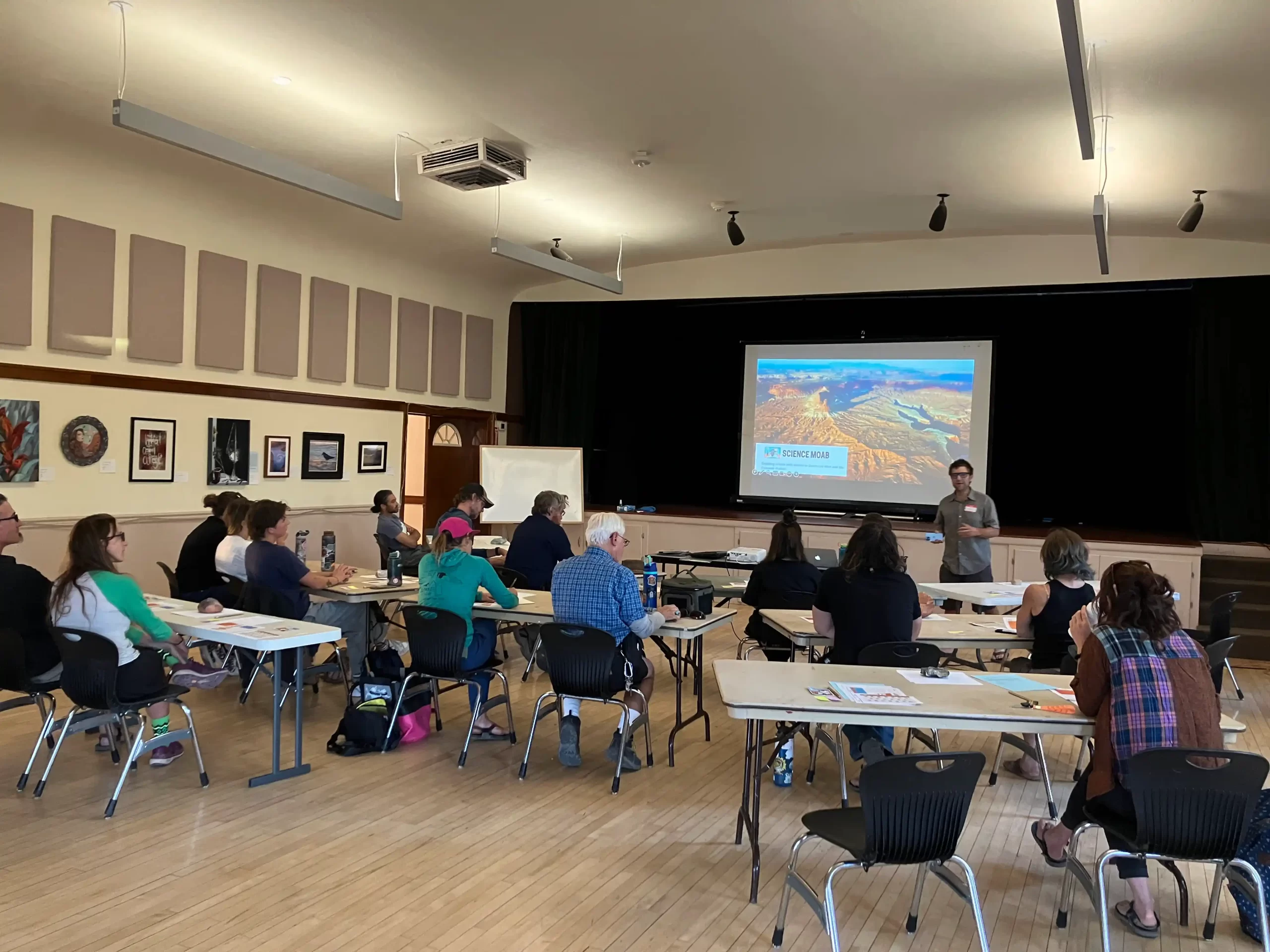Canyonlands National Park draws visitors from around the world today, but the expanses of sandstone mesas and deep canyons south and west of Moab were seldom visited just a few generations ago.
So how did it evolve from a once-remote and little-known wilderness to one of the most popular destinations in the area? Some of the park’s leading advocates will tell you in their own words during a free presentation at the Moab Information Center on Thursday, Aug. 13 at 6 p.m.
Moab resident Bruce Hucko produced a series of short radio features that incorporate their voices to make the case that the creation of Canyonlands, as well as nearby Arches National Park, put Moab on the map.
“Moab is what it is because of Arches and Canyonlands, and this is the root history,” he said. “You can’t go back any farther unless you deal with geology, or the Fremont (Indian) culture and the Anasazis.”
Hucko prepared the series in conjunction with Friends of Arches and Canyonlands and its Bates Wilson Legacy Fund to celebrate the park’s 50th anniversary in 2014. He continued to work on it after last year’s celebration by adding more voices to the mix, and he plans to get the discussion going next week by highlighting snippets from some of the more memorable remarks he collected.
“I’m going to be playing selected vignettes that I think will stir up a little conversation,” he said. “Hopefully, it will be a little bit interactive.”
Of course, if attendees prefer to, they can sit back and listen to some gems of local history, coming straight out of the mouths of the people who were instrumental in the park’s creation.
“To actually hear the history, instead of just reading it – that’s the big thrill,” he said.
In one major find, Hucko tracked down a rare recording of an interview between Canyonlands’ “father” Bates Wilson and National Public Radio correspondent Howard Berkes, which turned out to be a revelation.
“It was like, oh my God. I’d never heard his voice – what a soothing voice,” he said.
Wilson – the park’s first superintendent – helped bring the park into being on the strength of his charisma and personal touch, taking dignitaries and influential delegations on tours of the area that would become Canyonlands and treating them to home-cooked meals.
“Bates was known for his Dutch oven cooking, and he practiced what was known as ‘Dutch oven diplomacy,’” Hucko said.
By the time their camps were set up amidst the magnificent surroundings, Hucko said it didn’t take much to convince many of Wilson’s notable guests that the area was worthy of protection.
“The landscape would do the lobbying,” he said.
Next week’s presentation will go beyond Wilson’s role in the park’s creation to focus on his children, who recount their experiences around Canyonlands in their own words.
“They were mapping the place; they were exploring the place,” Hucko said. “It was really good to go back in time with them and recount some of that, because their memories are still so vivid.”
Hucko makes special mention of Bates’ son “Tug” Wilson, an electrician and engineer who owned the family’s first Jeep and led many of his father’s trips to the Needles District and other largely undiscovered places.
“I think he probably deserves to be in the limelight more than he is, because he was really his dad’s go-to man on his explorations,” he said.
Friends of Arches and Canyonlands Executive Director Joette Langianese said the series does an excellent job of outlining the collaborative effort that went into the creation of the park.
“I think that the most impressive part was how all these folks came together and worked together to make Canyonlands happen,”she said.
She attributes the final outcome to Wilson’s style of leadership.
“You don’t just cram things down people’s throats,” she said. “You have to work together; you have to compromise.”
Both Langianese and Hucko give special mention to one of the instrumental figures behind the park: Moab resident Ray Tibbetts.
“I think that people in the Moab community will be really surprised at how supportive he was in the creation of Canyonlands National Park,” Langianese said.
Hucko said that Tibbetts’ remarks are one of the obvious highlights of the series.
“He’s a great storyteller,” he said.
Other notable interviewees include the late Lloyd Pierson, who served as Wilson’s right-hand man, as well as Karl Tangren and rancher Heidi Redd, who share their personal anecdotes about Wilson and Canyonlands.
“There are all of these side stories,” Hucko said. “This stuff could go on forever.”
Voices of Canyonlands presentation profiles advocates in their own words
To actually hear the history, instead of just reading it – that’s the big thrill.
What: Voices of Canyonlands: Past, Present and Future
When: Thursday, Aug. 13, at 6 p.m.
Where: Moab Information Center, corner of Main and Center streets
Cost: Free





